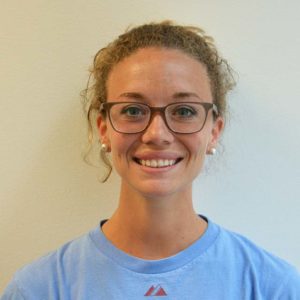Featured #MSUrbanSTEM Sustainability Fellow: Donna Figenshu
 Sustainability Fellow: Donna Figenshu
Sustainability Fellow: Donna Figenshu
Bio: Donna is a chemistry and physics teacher at Walter Payton College Prep High School. She is also the coach of both the girls basketball team and the Science Olympiad team at her school. Donna graduated from York College of Pennsylvania majoring in Secondary Education-Science and minoring in both chemistry and special education. She also earned her Master’s degree in Curriculum and Instruction with a concentration in Teaching Science.
Neuroeducation: Using the Rules of Brain Development to Inform Pedagogy
A new field is emerging at the intersection neuroscience and education that applies the wealth of knowledge we have recently acquired about the developing brain to the classroom. Education is being treated more like a science, and educating teachers and students about how the brain learns has been found to have a positive impact on their development (Bidshahri, 2017). When teaching chemistry to my sophomores, we begin the year by focusing on patterns that follow a clear set of rules. By learning the rules and the patterns they apply to, we can use those rules to benefit us. For example, creating a new substance, like Teflon, which has very specific properties that arise from adjusting the rules of molecular interactions. There are also rules and patterns that apply to how the developing brain learns best. If teachers are aware of those rules when planning and carrying out lessons, we can modify the environment to make the rules work for both us and our students.
There are two main rules that guide the pattern of successful learning.
- The human brain cannot multi-task.
- The second rule defines learning as the process of the brain creating new connections between neurons.
So here is the puzzle as I would present it to my students: How can we use these rules to our advantage to enable our students to achieve higher-level thinking objectives? Higher-level thinking is generally defined as the brain creating new physical connections between two different areas of neurons and drawing novel conclusions from that amalgamation.
Let’s analyze these two rules and see how they play off of one another. In order to learn at a high level, the brain needs to be able to focus its energies in two different places at the same time in order to create a connection between them. This clearly violates the first rule, which says that the brain cannot multi-task. When you attempt to multi-task, your brain is really just switching its focus back and forth between both tasks rapidly. Your performance in both tasks drops, especially if they use similar areas of the brain, and chemical imbalances will even occur, impeding learning and development (you can probably think of your own personal examples, such as typing and talking, driving and changing the radio, etc.).
So how can we adjust the environment or adapt the rules to remedy this predicament? How can we make higher-level thinking less taxing on the brain? One strategy that many teachers use involves making one of the brain’s two tasks much easier than the other. Students demonstrate higher-level thinking when they are able to come to unique conclusions about new content, which requires a new physical connection made in the brain between two areas of neurons. As teachers, we have the power to make it so that one of those areas is a place where strong neuronal connections already exist, what teachers refer to as “prior knowledge”. Using that area of the brain is easy, almost effortless, and does not require much focus or energy. The brain can concentrate its energy on the area of new information and the connection being made between the two, making this feel more like one task instead of two.
In addition to utilizing prior knowledge, teachers also use strategies like daily repetition and drilling to solidify foundational content. In order to build on top of our new knowledge with even more content, that new knowledge must become automated. Repetition and varied experiences with the new content will begin to strengthen those neuronal connections so that using this area of the brain becomes easier and requires little energy. Making connections to prior knowledge is a key first step, but additional higher-level thinking cannot occur without the student automating core information, thus easing the strain of multi-tasking. Foundational skills and content knowledge, the things that are going to be built upon all throughout the year (in chemistry our big one is nomenclature or fondly known as “the ions”), must be drilled on a consistent basis and these drills must stimulate various senses (think: hand signals, pictures, manipulatives). By engaging multiple senses, we are able to strengthen the simultaneous firing of neurons in different areas of the brain that you will eventually be using to build new learning on, again easing the strain of multi-tasking.
These are just two examples of classroom strategies that you were likely already aware of. We took these familiar strategies and connected them to new information on how the brain learns, following both of the basic rules that lead to successful learning. The last part is up to you! To achieve higher-level thinking you will need to take these two ideas, the rules of brain development and pedagogy, and relate them to one another to reach new conclusions and come up with new ways to apply these rules in your classroom (that you can share with all of us)!
Bidshahri, R. (2017, October 24). Neuroeducation will lead to big breakthroughs in learning. Retrieved from Singularity Hub: https://singularityhub.com/2017/10/24/neuroeducation-will-lead-to-big-breakthroughs-in-learning/?utm_source=hub&utm_medium=email&utm_campaign=xthinkers&utm_content=oct-week-4&mkt_tok=eyJpIjoiTmpjMk1UVmtNVFU1WXpreSIsInQiOiJuOUp3b3FYWjNTc2xVYnJFZXNZaHlqWHBL
Sanchez, H. (2017). The Education Revolution: How to apply brain science to improve instruction and school climate. Thousand Oaks, CA: Corwin.